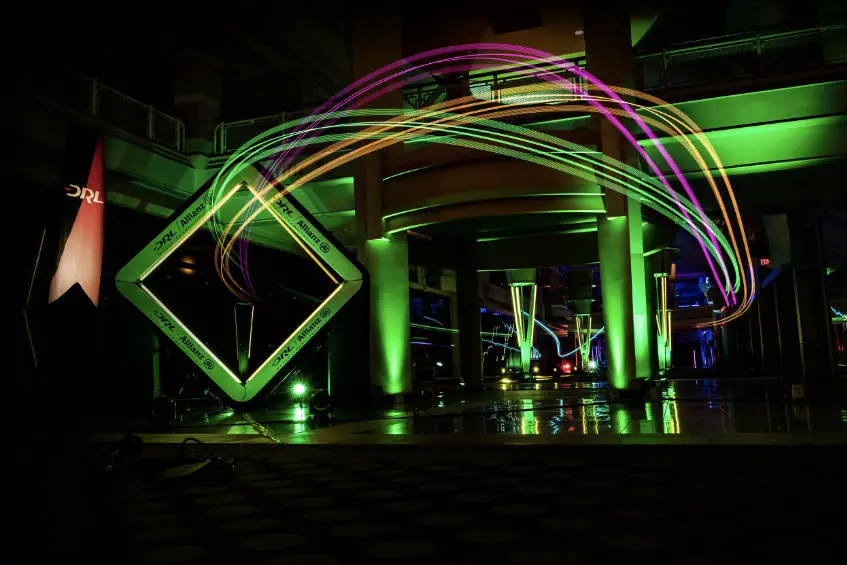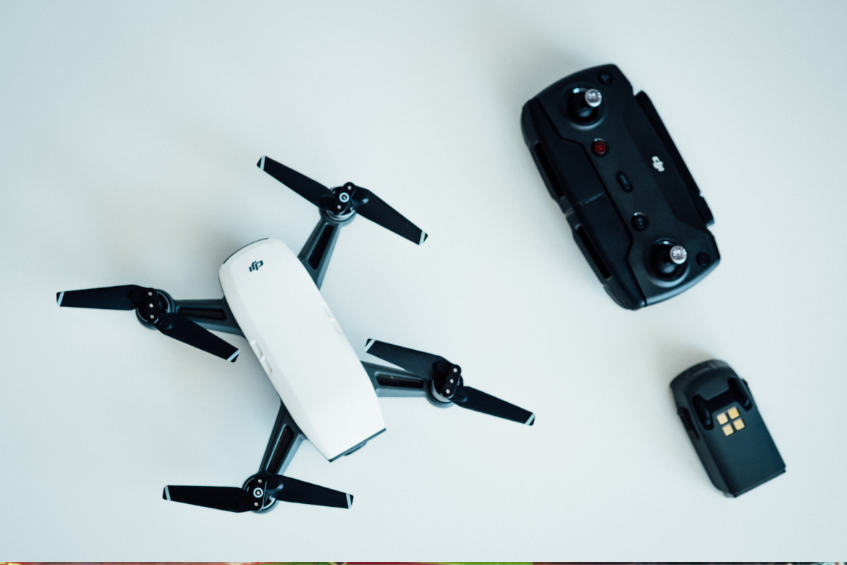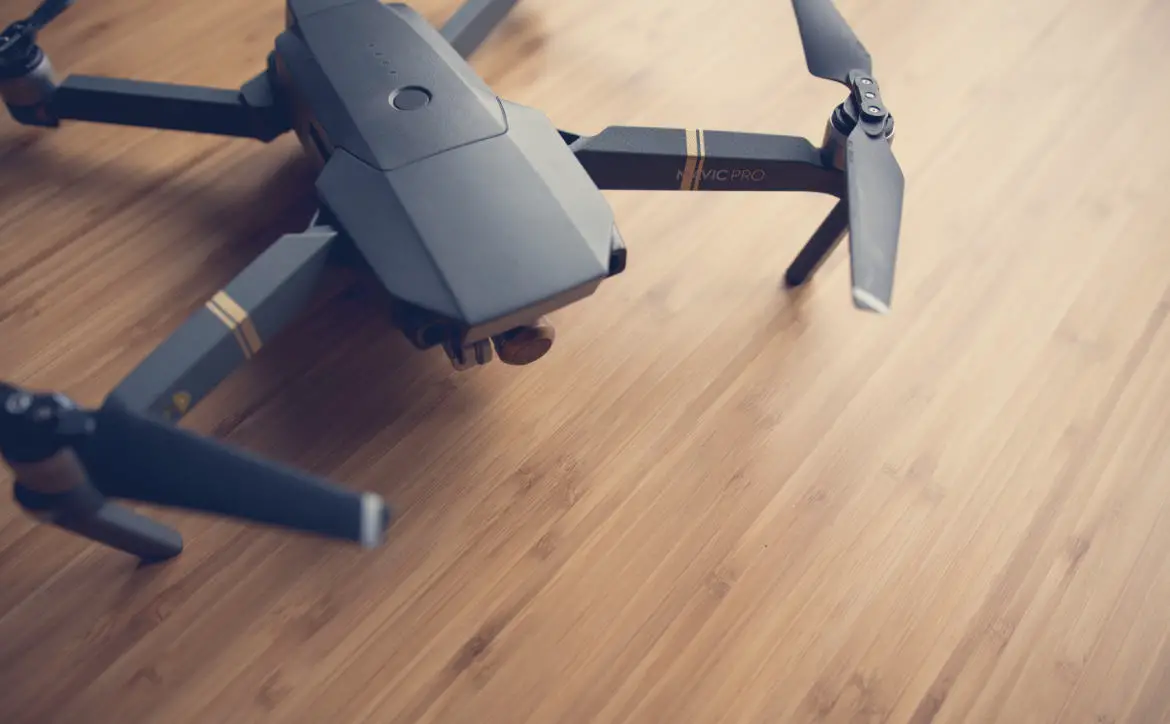“If you build it, they will come” has become something of a cliché. What started out as a comment about making a baseball field has turned into this weird cultural slogan that people use to talk about all sorts of things.
Estimated reading time: 0 minutes
…but that doesn’t make it any less true.
Humans are drawn to competition, whether that’s sports or gaming or cooking. It’s why reality TV eclipsed scripted dramas and why most hobbies have a competitive stage for the top-tier performers. We’re constantly looking for ways to improve and test our proficiency at things.
That mindset also affects the tech space, from technical hackathons to exciting eSports. But one of the most interesting (and dare I say “thrilling”) forms has got to be competitive drone racing.
It’s still a relatively new sport, but that only adds to what makes it interesting. There’s a level of uncertainty — and a whole lot of misinformation — about drone racing, so let’s take a look at what it is and the steps you can take to becoming a drone pilot.
Is Drone Racing Actually That Competitive?
The short answer is “Yes.” It has the same levels of complexity as any other racing sport, but also requires a reaction speed similar to a pro baseball player swinging at a 100 mph fastball. Except unlike NASCAR and Formula 1, drone racing takes place on a three-dimensional “track.”
If you’ve never seen a drone race before, the easiest comparison is air racing. It’s a motorsport where pilots take aircraft through an obstacle course. Air racing is as much about the race as it is the spectacle, combining high-speed (and therefore dangerous) maneuvers with the fact that the pilots are also dealing with other planes, obstacles, and gravity.

Drone racing has a few similar pieces, but it’s also inherently different.
The core of competitive drone racing is its digital first-person view (“FPV”) system, and that introduces an extra complication: How do you navigate a high-speed obstacle course when there’s a millisecond delay as the camera feed is broadcasted from the drone to your headset, and then your reaction is broadcast back to the drone?While your neighbors might pilot a drone with their phone and their eyes, drone racers have to use a headset. They are still piloting the drone, but they have to deal with a lack of physical connection that’s so important in other motorsports.
So, to return our earlier question, the answer is still “yes.” Drone racing in a straight line across a field would be competitive just because of the technical complexities involved. And once you add in all the other aspects of competitive drone racing, it gets even more intense.
A Deeper Look At Competitive Drone Racing
A major part of what differentiates drone racing leagues is how the tracks are designed. Some prefer outdoor spaces, with flags and cones that call back to the sport’s air racing heritage.
Other leagues (like the Drone Racing League series) stay indoors, creating futuristic courses that look more like a Tron set than a race course. And those are the leagues that tend to get the most buzz — there’s a level of interest and energy because those races present a look that’s different from other motorsports.
But regardless of where the race takes place, navigating these courses requires borderline superhuman reflexes. The lack of spatial awareness would be a challenge on its own, but when you add in a drone moving at 100+ mph as well as other piloted crafts things get…complicated.
(Especially when the pilots are trying to do all of that through a VR headset with input lag.)
Unlike air racing, drone racing is both more intense and also less dangerous. (Thankfully nobody dies if a drone crashes into the floor.) Drones move much slower than planes, but the speed relative to the size of the course adds a kind of drama.
Many obstacles are barely larger than the drones themselves, and pilots only have a small window of time to make their moves. And the restricted vision, plus the high speeds, require a pretty high skill level for drone pilots who want to compete at the highest professional levels.
How To Become A Drone Racing Pilot
Drones and quadcopters are cheaper than most vehicles, which means drone racing is much more accessible than other motorsports. But just because you have the money to buy the equipment doesn’t mean you’re ready to show up on a pro racing circuit.

While there are definitely steps you can take to become a drone pilot, you won’t find any generic checklists to turn you into a drone expert overnight. Aviation students don’t just get handed the keys to a 747 on graduation day (and not just because planes don’t actually use keys).
Step 1: Start With A Simulator
Aspiring pilots start off with flight simulators as a way to get familiar with the instrument panel, the different readouts, and other basics. It’s as much a safety precaution as it is an introductory course.
Again, drones aren’t planes. Crashing a drone won’t even cause you bodily harm, assuming you don’t fly it into yourself. But looking into flight simulators — and especially drone simulators — will help you get used to the look and feel of piloting a drone.
The Drone Racing League has a semi-official simulator available**, but there are dozens of options out there. Buying a program may feel like a waste of funds that could go toward a drone, but a $20 simulator*** is a lot cheaper than replacing a drone that you crashed in your first piloting session.
Step 2: Hit The Great Outdoors
After spending time with simulators, you’re going to be more than ready to get some hands-on practice. And once you’ve purchased a racing drone, your next step will be to find a large, open space. That might be an empty field, a big yard, or even a park.
The actual location doesn’t matter too much. Your goal is to choose a spot where you can keep your eyes on the device while also getting familiar with handling a physical drone.
Step 3: Put On Your Headset
Once you get acclimated to your drone, you can start to practice with a headset.
Finding the right headset can be as difficult or as easy as you want, but do some research first and make sure you buy a headset that is compatible with your drone. (Most headsets will work for all drones, but it’s better to be safe than sorry when you’re making a big investment in tech.)
Again, the benefit of a big, open space is that you don’t have to worry about obstacles that could damage your drone. That becomes a larger risk once you start practicing with the headset, so you may even want to find a larger field once you get to this point in your “training.”
Step 4: Set Up Some Obstacles
Obstacles are the calling card of drone racing leagues. So if you’re serious about getting into competitive drone racing, you’ll need to purchase or build rings, gates, nets, and any other barrier that will require careful and precise maneuvering.
The good news is that you don’t need to invest too heavily. If you want to purchase “official” equipment, you can order a drone racing obstacle kit.
But you could also research the size dimensions of popular obstacles and build a DIY course after a visit to your local hardware store. (Building a course out of PVC pipes is probably the most affordable option; you can also disassemble and rebuild different obstacles as needed.)
Drone racing can be an expensive hobby, but this is one stage where you can cut down on the cost without too much difficulty.
Step 5: Take It Back Inside
No, you aren’t headed back to the simulators: You’re looking for a room (probably a gymnasium or basement) where you can set up your obstacles and start practicing in a confined space.
This step could be optional depending on the sort of drone racing you want to do. If you’re interested in the outdoor air racing-inspired competition, then you won’t need to worry too much about the finer details of indoor challenges.
However, this is the final stage of training to become a drone racing pilot. The skill ceiling is incredibly high, as you can see. But the variety of competitions and events means that anyone with an interest in drone racing can find some way to get involved.
And that means your next step will be finding leagues, tournaments, or events near you. You’d be surprised how many local groups organize events, and that can be a great way for amateurs to test themselves and their skills.
Once you’ve got a few races under your belt, you can start looking for higher-level competitions in your region. A few semi-pro championships might be all that separates you from your dream of becoming a professional drone racing pilot that competes at the highest level in the sport.
What do you think of drone racing and drones? Please share your thoughts on any of the social media pages listed below. You can also comment on our MeWe page by joining the MeWe social network.
**CORRECTION: The DRL SIM is an official drone racing simulator (not semi-official): professional pilots compete on the DRL SIM on NBC as part of our virtual series, and it hosts our annual player-to-pilot esports tournament, the DRL SIM Tryouts, that transforms gamers into official DRL Pilots.
***CORRECTION: The DRL SIM is $9.99, not $20, and is available on PlayStation, Xbox and Steam.
Drew Gula is the copywriter at Soundstripe, a stock media company that provides creators and businesses with tools like royalty-free rock music.
Last Updated on May 29, 2023.











Comments are closed.